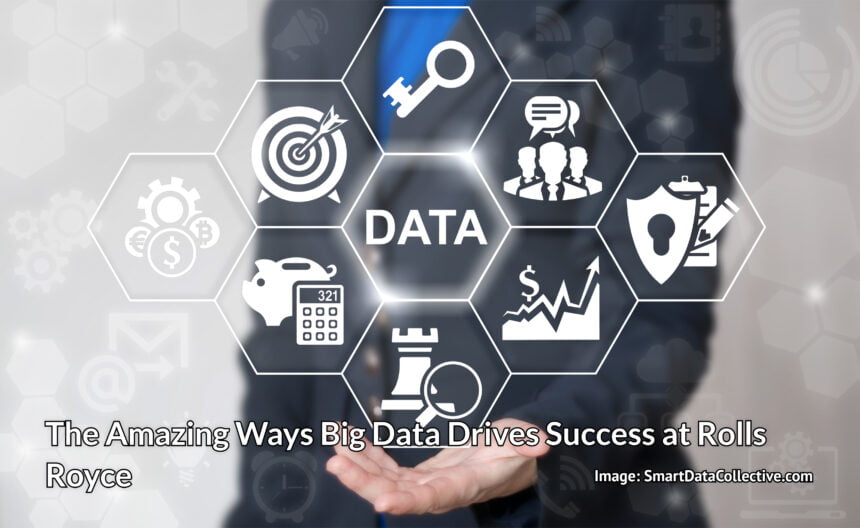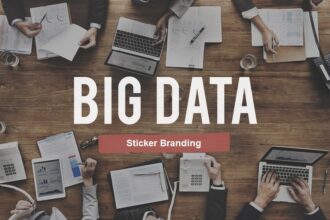Rolls-Royce manufactures enormous engines which generate huge amounts of power, as they propel airplanes and ships across skies and oceans. It is an extremely high-tech industry where failures and mistakes can cost billions – and even human lives. It’s no surprise then that the company – which split from its automobile manufacturer parent company following insolvency in 1971 – has wholeheartedly embraced Big Data. Its engines and propulsion systems are all fitted with hundreds of sensors which record every tiny detail about their operation and report any changes in data in real-time to engineers who will decide the best course of action from scheduling maintenance or despatching engineering teams should the problem require it. But that’s only the start of the plan! The company has spoken about a time when it believes ships may pilot themselves, making logistical decisions such as whether to alter course due to environmental conditions. It is anticipating that there will be a time when computers will simply be able to make these decisions more efficiently than humans, and it will be a wise financial move – as well as safer – to listen to them. All this will be possible they theorize, because – as anyone familiar with my posts should know by now – Big Data is about much more than the volume of data which is generated. It’s also about the increasingly sophisticated methods of computer analysis which can be applied to this data – in the hope of drawing out insights which can drive efficiency and progress. Paul Stein, the company’s chief scientific officer, explained to me that Rolls Royce puts Big Data processes to use in three key areas of its operations – design, manufacture, and after-sales support. He said “Right now we have huge clusters of high power computing which are used in the design process. We generate 10s of terabytes of data on each simulation of one of our jet engines. “We then have to use some pretty sophisticated computer techniques to look into that massive data set and visualize whether that particular product we’ve designed is good or bad. Visualizing Big Data is just as important as the techniques we use for manipulating it. It decreases development time and improves the quality and performance. “Right across the group, in our nuclear business, in marine and in our reciprocating engines and gas turbines, the role of Big Data in design is becoming more and more important with time. “We eventually want to get to a place where we can completely visualize the operation of our products in all the extremes of behavior that our products get used. That’s an aspiration and we’re on our way towards that end game.” In manufacturing, the company’s manufacturing executing systems are increasingly becoming networked and communicating with each other, in the drive towards a networked, Internet of Things industrial environment. Paul said “We’ve just opened two world class factories in the UK, in Rotherham and Sunderland, making discs for jet engines and turbine blades. “They are both leading edge factories and the innovation is not just in the metal bashing processes, which are very sophisticated and very clever – but also in the automated measurement schemes and the way we monitor our quality control of the components we make in those factories. We are moving very rapidly towards an Internet of Things based solution. “At our new factory in Singapore we are generating half a terabyte of manufacturing data on each individual fan blade. We produce 6,000 fan blades a year there, so that’s three petabytes of data on manufacturing just one component. It’s a lot of data.” Rolls-Royce has operational service centres around the world, in which expert engineers are analysing the data being fed back from their engines. It can amalgamate the data from its engines to highlight factors and conditions under which engines might need maintenance. In some situations humans will then intervene to avoid or mitigate against whatever is likely to cause a problem. Increasingly, in the view of Rolls-Royce and other companies (such as GE) on board the Big Data and Industrial Internet revolutions, computers will carry out the intervention themselves. An example of this can be seen in what Rolls Royce refers to as its Ship Intelligence initiative. Developed with the VVT Technical Research Center of Finland, it not only provides captains and crews with a remarkably Star Trek-like experience (where personnel are automatically scanned for security clearance and then personally greeted by the computer when they enter the bridge.) It also enables the craft with sophisticated Big Data-driven automatic piloting and operating systems. Hazards detected by sensors can be highlighted to the crew right in front of their eyes by augmented reality (AR) displays, and should they (for some reason) ignore them the ship can automatically plot a safe path. Mikael Makinen, president of the marine division of Rolls Royce, told the press at the end of last year “We are entering a truly exciting period in the history of shipping, where technology and in particular the smart use of Big Data is going to drive the next generation of ships.” It is also proposing “drone ships” – autonomous cargo ships which would carry thousands of tons of goods across the oceans without a single human being on board, and has spoken of a future when hundreds of these ships will be controlled from a single “nerve center” control room. Without the need to sustain humans in comfort during long sea voyages, cargo vessels could be built far more cheaply and more environmentally friendly. Fuel use would be cut by 15%. The company already has many of the ‘building blocks’ which could make this concept a reality, such as remote equipment monitoring, and highly reliable propulsion systems, and expects to have a small-scale demonstrator vessel at sea within a few years. Stein told me “One problem that this would solve is that it is surprisingly very hard to recruit merchant marine crews. People’s modern lifestyles and lifestyle expectations mean they don’t want to spend two months at sea. We’ve had a surprising amount of customers asking us for more information about this.” In the air, Rolls-Royce engines (which are in use by 500 airlines and more than 150 armed forces) are monitored by its Engine Health Management systems. With civil aero engines as reliable as they are, the emphasis shifts to keeping them performing to their maximum, saving airlines fuel and meeting their schedules. Big Data analytics helps Rolls-Royce identify maintenance actions days or weeks ahead of time, so airlines can schedule the work without passengers experiencing any disruption. To support this, analytics on-board the engines crunch through terabytes of data each flight, and transmit just the pertinent highlights to ground for further analysis. Once at the gate, the whole flight data is available for engineers to examine and detect the fine margins of performance improvement. “Data analytics are run across all of those data sets,” Paul tells me. “We are looking for anomalies – whether pressure, temperatures or vibration measurements are an indicator that an engine needs to be services.” Obtaining this level of insight into the operation of its products means that Rolls Royce has been able to offer a new service model to clients which it calls Total Care, where customers are charged per hour for the use of its engines, with all of the servicing costs underwritten by Rolls Royce. “That innovation in service delivery was a game-changer, and we are very proud to have led that particular move in the industry” says Paul. “Outside of retail, it’s one of the most sophisticated uses of Big Data which I’m aware of.” The next generation of aircraft will include engines that are permanently connected to the Data Centre, allowing engineers to turn the dial up or down on the data transmitted in-flight or even deploy a new analytic across the whole fleet in seconds. The huge amount of factors taken into consideration mean that, when something goes wrong, everything which contributed can be identified and the system can learn to predict when and where the problem is likely to repeat itself. Although it doesn’t give precise figures, the company says that adopting this Big Data-driven approach to diagnosing faults, correcting them, and preventing them from occurring again has “significantly” reduced costs. It also says it has streamlined production processes by allowing faults to be eliminated from future products during the design process In 2013, Rolls-Royce moved Big Data research even higher up its agenda, making it a focus of the study of its corporate lab, established in partnership with the Singapore Nanyang Technology University. Key areas of research were said to be into electrical power and control systems, manufacturing & repair technology, and computational engineering. This built on the company’s existing partnerships with top universities in the UK and around the world. This international approach is key to the company’s strategy for tackling the often-cited problem of a lack of trained and experienced data analytics staff. “Skills are always an issue”, says Paul, “Getting top class talent is never easy, but you can make it easier on yourself by going where the top talent it.” Rolls-Royce serves as a great example of an industrial giant of the “old age” – when innovation was about forging the future through steel and sweat – transitioning to the new age of data-enabled improvement and efficiency. Their vision of a future where planes, trains and automobiles operate with minimal human interaction – with us placing our trust in their superior speed and ability to process huge amounts of data far more quickly than we can ourselves – might seem like science fiction, but we are likely to see more and more of it appearing in the real world in the near future. As Paul puts it, “Rolls Royce, like many successful industrials, is having to become more and more digitally aware. The digitization of RR is not up for debate, the question is not whether it will happen but how fast it will happen. I think of Big Data as the encroachment of digital technology into what historically have been mechanical or electronic industries. It forms a big part of our present but is going to form an even bigger part of our future.”










